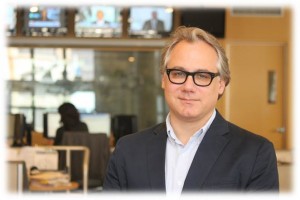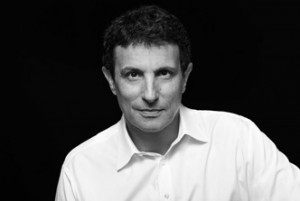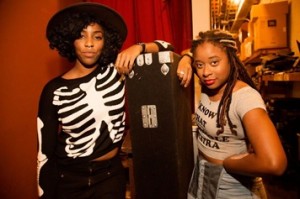Last week, Radio’s Most Innovative showcased WNYC Studios in part one of an interview with New York Public Radio’s Dean Cappello. Dean serves as WNYC’s Chief Content Officer, and is a major player in this exciting initiative.
As he told us in last week’s installment, WNYC has “doubled down” on podcasting. As he explained it, the mission is “to build strong audio properties based on personalities for audiences that prefer on-demand listening.”
 And what started out as a story about WNYC Studios has turned into a primer on podcasting, why it matters to the radio industry, and the priorities that stations and companies should consider when launching their own initiatives.
And what started out as a story about WNYC Studios has turned into a primer on podcasting, why it matters to the radio industry, and the priorities that stations and companies should consider when launching their own initiatives.
In part two, Dean talks about the intricacies between content creation for broadcasting versus podcasting, as well as the key issues of monetization and funding. He also addresses the need for broadcasters to create dedicated programming for podcasts, rather than just repurposing shows and programs that have already aired.
Get ready to take good notes, and thanks again to Dean, Laura Walker, and Tom Hjelm, New York Public Radio’s talented team.
JM: What is the difference between creating content for the radio and for a podcast?
DC: I think it all comes down to understanding how a listener will use what you make. Are they joining a linear stream or are they loading up a smartphone for a run or a commute? The modes are different and they require different treatments. Also, creating for the radio is making for a listener who is bringing some well-known expectations to the experience. The range on a public radio station is much narrower than an iTunes queue for good and specific reasons. The podcast allows you to reach out to someone with a particular interest wherever they are. That’s really good for everyone in the audio business.
You can drill down and see the differences in length of content, tone, language, etc. Podcasting is consistent with what we see in social media more broadly, in attaching yourself to someone to follow. If you love a comedian and they have a talk-show style podcast, you will show up until you don’t like it. You’re not trying to learn or get information. You want an experience with that personality. Public radio has had a difficult relationship with strong personalities but they’ve always fueled radio in general. I think podcasting takes that all to an entirely new level.
JM: Explain the term “narrative audio” and talk about how you see it evolving in the future.

Photo credit: WNYC
DC: Are you trying to start a fight? Narrative audio is, I suppose, in the ear of the beholder. I think of it as the gripping personal story, the universal values. It may be the front door on big issues, or it may simply be a personal story that makes you feel less alone.
But I think it’s understanding the emotional component and power of audio. It’s why we read great novels or get swept up in drama. I think it’s often fetishized and discussed as a thing unto itself. I think of it more as an outcome with a thousand pathways for delivery.
In what we’re experiencing now, it’s about the well-crafted, well-edited, amazingly composed moment that sticks to you viscerally and emotionally. But I leave it to some central committee to define the term.
JM: WNYC has been at the forefront of promoting podcasting to sponsors via your Upfront effort. Describe why you took that approach and how it is working?
DC: The first-ever public radio podcast upfront was about convening significant players in the audio space – WNYC, NPR, WBEZ, TAL – putting our talent and best case in front of the advertising community. We live in a culture that’s driven by the moving image. But public radio has been championing the deep and lasting power of audio for decades and the audiences that we now collectively represent across on-demand and broadcast are significant. Serial is the best example but there are many others. We lead in so many ways. And we represent highly-engaged audiences who are hugely active and influential. The publishing business kills to get authors in front of Terry Gross for a reason. So I think the Upfront was really about owning our power, asserting our value in the new digital advertising space, and helping to clarify who the most important players are as the market develops.
JM: How does an effort like this impact fundraising?

Photo credit: Brigitte Lacombe
DC: On the philanthropic side, the WNYC Studios is being funded through a campaign for program development. We are raising a targeted $15 million to establish a revolving fund that will seed new projects and use revenue from successful projects to incubate additional shows. We have a strong track record with foundations and major donors, and the response from the philanthropic community has been enthusiastic.
On the sponsorship side, we have strong long-standing relationships with sponsors who are excited to be in or get into the podcasting space, and new sponsors who want to explore this growing space. We’ve seen a 167% growth in podcast sponsorship alone in just the last two years.
In terms of membership, the passion among podcast audiences is a strong foundation to build up a membership base, as we’ve experienced with our success in converting fans of Radiolab into members. We are working with each podcast individually to figure out what makes sense for their respective audiences.
JM: Many public radio podcasts are simply repurposed shows that are made available in this format. Why aren’t more public radio stations creating original podcasts?

Photo credit: Mindy Tucker
DC: I make a distinction between radio delivered as a podcast and something created in a digital first context. They are both valuable. But one is time shifting and the other is creating for a particular experience.
I think the biggest barrier for most public radio stations is that you have to make content development a central feature of your work. You can’t do it as a sideline. The companies that are having the greatest success have made building new things a core part of their service to listeners.
We made a decision at WNYC to worry less about platforms and technology and just to be a great content company. The ubiquity and range of delivery – iTunes and apps and cars, etc. – should incent all of us to return to the task of building great, sticky things and not worrying as much about delivery. As a creative shop, that is hugely liberating. I think you are seeing the same thing in video. No one’s really worried about where their content will end up so long as there’s the right kind of respect for creators and the content gets delivered with great exposure and impact.
Almost every public radio station has someone in their shop or in the local community who would be welcomed by listeners all over the world. You can now be located anywhere and deliver global impact. I think most stations are worried about cannibalizing radio by creating great on-demand content or they insist that on-demand content deliver people back to the radio. And I think those are terrific ways to kill the creative spark that’s waiting for oxygen right in front of you. Giving talent the right space and support are key. I asked some of my colleagues for lessons to share with managers about getting the best out of creative people. Brooke Gladstone wants to remind managers that “It’s not about you,” that we need to support and not feel competitive with our talented colleagues. And Jad Abumrad talked about the need to burn through twelve ideas to get to the “thirteenth idea,” the one that will really set the world on fire. Many institutions don’t have the appetite or patience for working that way.
I recognize we are in New York City and have significant resources for production, strong fundraising capabilities, etc. But I think the principles translate no matter how big your staff is. One person with a good idea and a drive to succeed can make a big noise.
JM: What advice would you give to an aspiring podcast host who wants to grow their show?
DC: I think most people are not thinking enough about who will listen, who the potential audience is. It’s the first question I ask people. If the answer is “people who listen to podcasts,” you’re not being sharp enough. Even if you think your work has broad appeal, think of the one or two people who define your potential audience and work directly at serving them. They will be your anchors. It’s also a terrific antidote to the tendency of thinking that whatever you want to say will be compelling to others.
There’s also something catalytic about surrounding yourself with strong and smart people. Your personal vision can really benefit from being challenged by other people with strong opinions and experience. Many people want to be on their own for a lot of good reasons. But they might be missing out on how ideas get burnished and improved in group situations, working with people who have solid experience developing, launching and sustaining projects.
So however you do it, find a creative support group and ask a lot of questions. Be open to feedback. And find a few people you trust to be straight with you. People are more than willing to help if you just ask.
Thanks to Mike Stern for putting this post together.
INNOVATION QUOTE OF THE WEEK
“It’s always about timing. If it’s too soon, no one understands. If it’s too late, everyone’s forgotten.”
Anna Wintour, Editor-In-Chief, Vogue
More of Radio’s Most Innovative
- Radio's Most Innovative: WTOP Digital
- Radio’s Most Innovative: NPR One
- Radio’s Most Innovative: Entercom Sacramento’s “Eat Farm To Fork” Initiative
- Radio’s Most Innovative: WLEN Radio
- Radio’s Most Innovative: WNIC’s “Pillow Talk” with Alan Almond
- Can Radio Afford To Miss The Short Videos Boat? - April 22, 2025
- Media And Technology In 2025: Believe It Or Not! - April 18, 2025
- In Radio, You Just Never Know - April 17, 2025





Leave a Reply